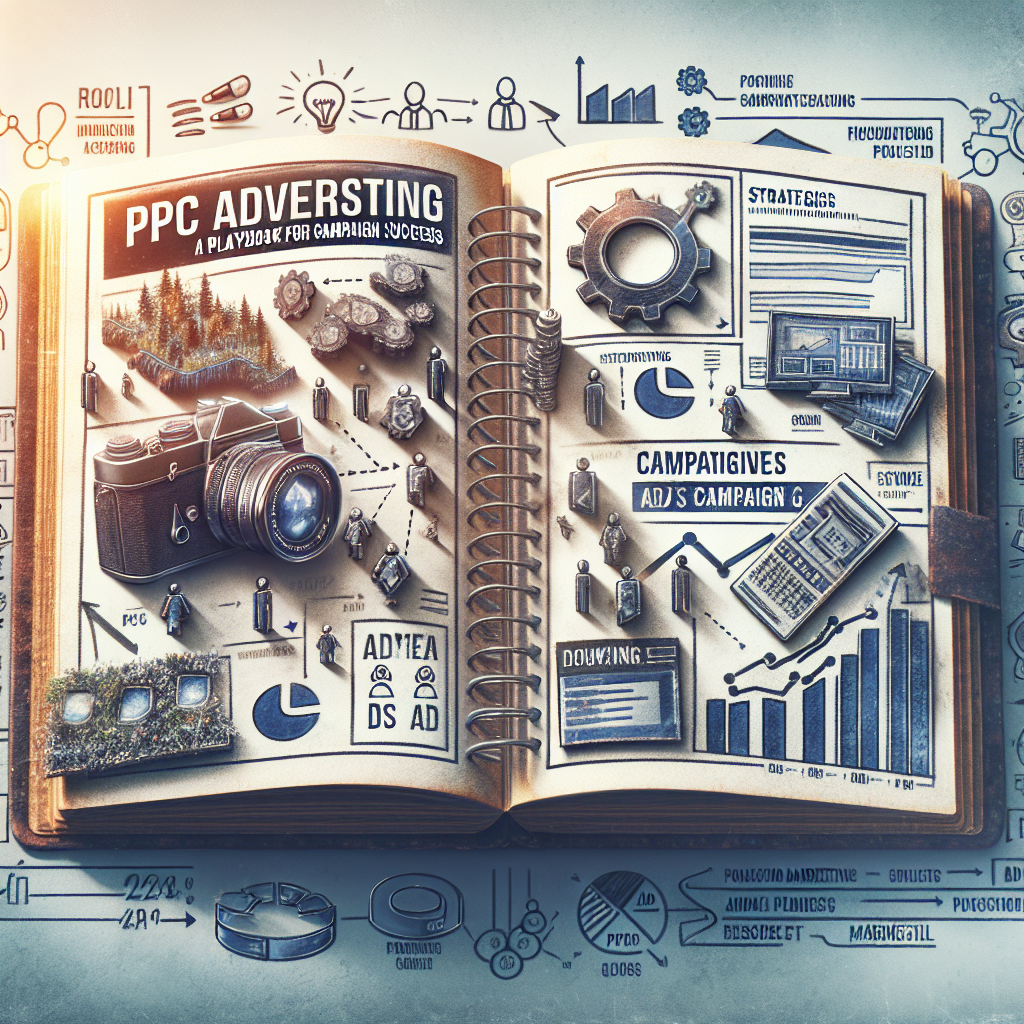PPC Advertising: A Complete Playbook for Campaign Success
PPC Advertising: A Complete Playbook for Campaign Success
PPC advertising is a powerful lever for brands seeking rapid, measurable growth. But true mastery demands more than just setting up ads—it requires strategic planning, ongoing optimization, and scalable frameworks. This paid media guide delivers a step-by-step playbook, actionable tactics, and real-world examples to help you outperform competitors and maximize ROI.
Table of Contents
- Understanding PPC Advertising
- Setting Campaign Objectives
- Building Your PPC Framework
- Keyword & Audience Research
- Ad Creation & Copywriting
- Landing Page Optimization
- Campaign Launch & Monitoring
- Optimization & Scaling
- Case Studies: Winning PPC Strategies in Action
- Actionable Takeaways
- Further Reading
1. Understanding PPC Advertising
PPC (Pay-Per-Click) advertising is a model where advertisers pay a fee each time their ad is clicked. Platforms like Google Ads, Microsoft Ads, Facebook, and LinkedIn allow businesses to bid for ad placements to target high-intent audiences. The core advantage of PPC is its ability to deliver immediate, measurable results and granular control over targeting and spend.
- Key Benefits: Fast results, precise targeting, budget flexibility, robust analytics.
- Common Channels: Search, Display, Shopping, Social, Remarketing.
For a foundational understanding, see our What is PPC Advertising? guide.
2. Setting Campaign Objectives
Successful PPC begins with clear, measurable goals. Objectives inform your bidding strategy, ad formats, and performance metrics. Common PPC objectives include:
- Lead generation
- Online sales
- Brand awareness
- App downloads
Expert Tip: Use SMART criteria (Specific, Measurable, Achievable, Relevant, Time-bound) to structure campaign goals.
3. Building Your PPC Framework
Every effective PPC strategy is built on a solid framework:
- Market and competitor analysis
- Budget allocation
- Campaign structure (by product/service, audience, or funnel stage)
- Conversion tracking setup
For in-depth guidance, explore our PPC Strategy Framework article.
4. Keyword & Audience Research
Keyword Research for Search Campaigns
Comprehensive keyword research is the backbone of search-based PPC. Use tools like Google Keyword Planner, SEMrush, or Ahrefs to identify high-intent, high-converting keywords.
- Match Types: Broad, Phrase, Exact, Negative Keywords
- Intent Mapping: Identify keywords at various stages of the buyer’s journey
Practical Example: An ecommerce client selling running shoes discovered long-tail queries like “best cushioned running shoes for flat feet” delivered 30% higher conversion rates than generic terms.
Audience Targeting for Display & Social
Leverage platform-specific audience data—demographics, interests, behaviors, and lookalike modeling—to reach your ideal customers.
- Custom Audiences (retargeting past visitors)
- Lookalike/Saved Audiences
- Layered targeting (combine demographics, interests, device, etc.)
5. Ad Creation & Copywriting
Writing High-Converting Ad Copy
Great PPC ads connect with user intent and motivate action. Essential elements include:
- Clear value proposition
- Compelling call-to-action (CTA)
- Keyword relevance
- Ad extensions (sitelinks, callouts, structured snippets)
Example: A B2B SaaS company tested the CTA “Start Free Trial” versus “Book a Demo”—discovering that the latter generated 40% more qualified leads among enterprise audiences.
Creative Best Practices for Display & Social
- Use high-contrast visuals that follow brand guidelines
- Include actionable overlays or headlines
- Test multiple creative variants for each audience segment
6. Landing Page Optimization
Sending clicks to poorly optimized pages is the fastest way to drain your PPC budget. High-performing landing pages are:
- Relevant to the ad and keyword
- Fast-loading and mobile-friendly
- Designed for a single, focused conversion action
- Equipped with trust signals (testimonials, reviews, security badges)
Case Study: An online course provider increased conversion rates by 68% after simplifying their landing page, reducing form fields, and adding student testimonials.
7. Campaign Launch & Monitoring
When launching, start with tightly controlled budgets and structured experiments. Key steps:
- Set up conversion tracking (Google Analytics, Facebook Pixel, etc.)
- Define initial bids and budgets
- Monitor key metrics daily (CTR, CPC, CPA, Quality Score)
Pro Tip: Use automated rules or scripts to pause underperforming ads and allocate budget to top performers.
8. Optimization & Scaling
Ongoing Optimization
- Analyze search term reports and add negative keywords
- Test new ad copy and creative regularly
- Adjust bids based on device, location, and time of day
- Refine audience segments for higher relevance
Scaling Your PPC Campaigns
Once profitable, scale by:
- Expanding keyword lists and targeting options
- Increasing budgets for best-performing campaigns
- Testing new channels (YouTube, Bing, LinkedIn, TikTok)
- Leveraging automation (Smart Bidding, Responsive Search Ads)
Example: An ecommerce retailer used automated bidding and expanded to Google Shopping, boosting ROAS by 50% within three months.
9. Case Studies: Winning PPC Strategies in Action
Case Study 1: Lead Gen SaaS
A SaaS client implemented granular keyword grouping and ad copy testing, driving a 35% reduction in cost per lead while doubling lead volume. Key tactics included:
- Segmentation by funnel stage
- Dedicated landing pages per campaign
- Weekly negative keyword updates
Case Study 2: Ecommerce Brand
An emerging DTC brand used Facebook’s Lookalike Audiences and dynamic creative testing to rapidly scale from $10k to $100k/month in revenue. Success factors:
- Data-driven creative rotation
- Consistent retargeting for cart abandoners
- Daily performance reviews and budget adjustments
10. Actionable Takeaways
- Define clear, measurable campaign objectives before you launch.
- Invest in thorough keyword and audience research—don’t rely on intuition alone.
- Test multiple ad variations for copy, creative, and CTAs.
- Optimize landing pages for relevance, speed, and conversion focus.
- Monitor campaigns daily and iterate using data-driven insights.
- Scale successful campaigns methodically—avoid budget spikes that can disrupt performance.
11. Further Reading
- How to Allocate Your PPC Budget
- Google Ads Optimization Best Practices
- Top Paid Media Metrics to Track
- PPC vs SEO: Which Is Right for Your Business?
Mastering PPC advertising is an ongoing journey, but with the right playbook, you can drive sustained growth and outpace the competition. For advanced strategies, check out our Paid Media Guide and related articles in our PPC cluster.







